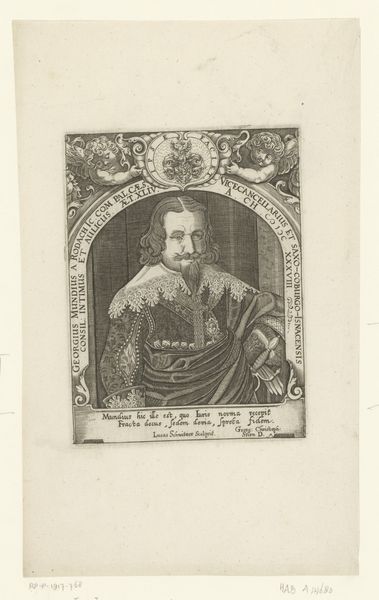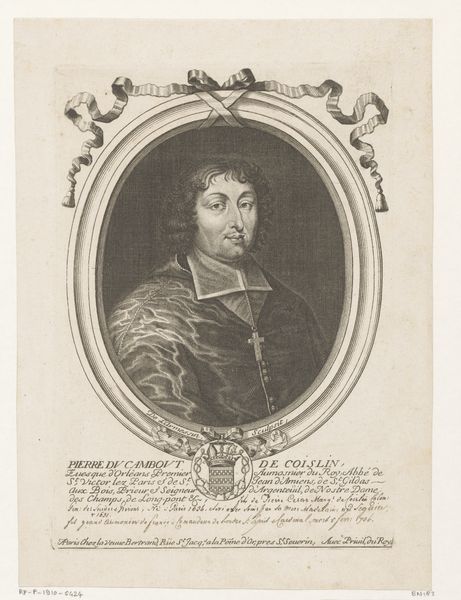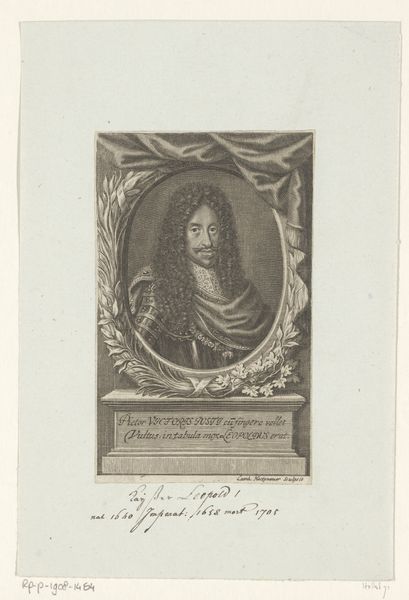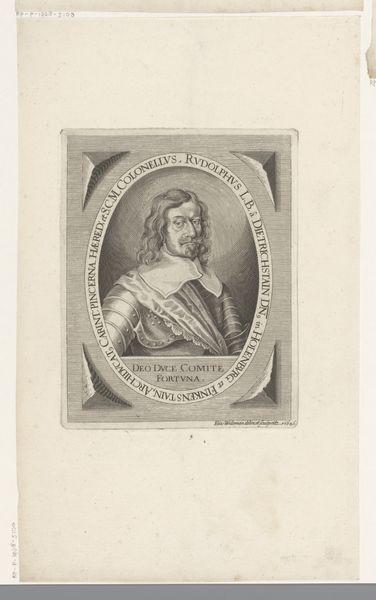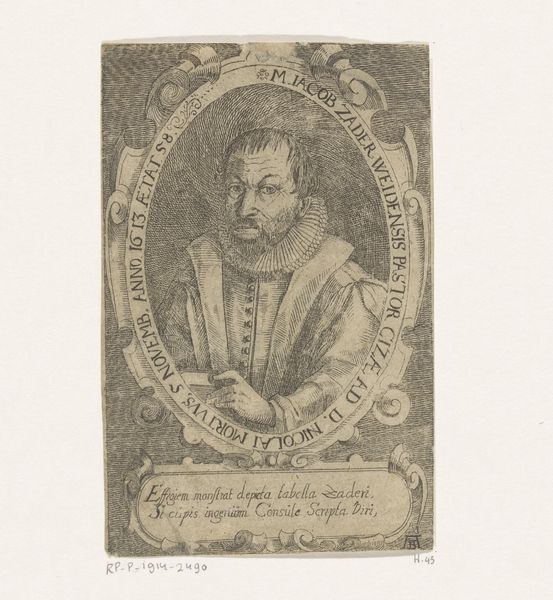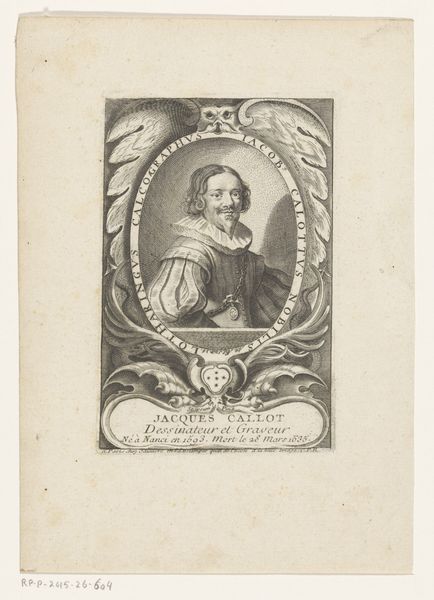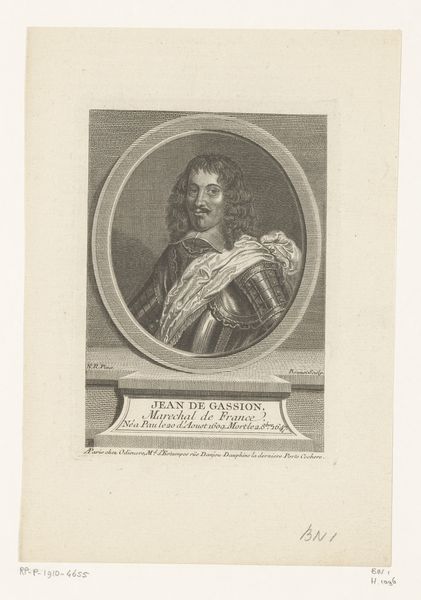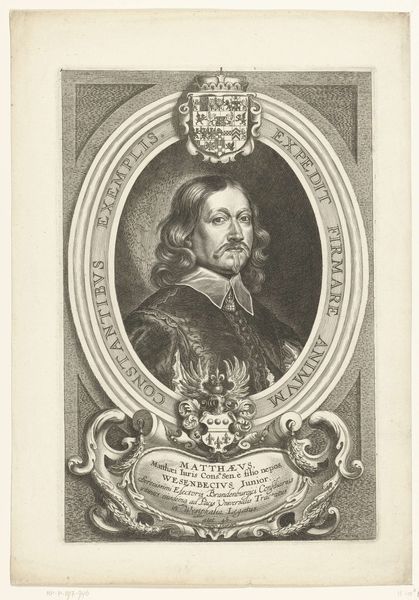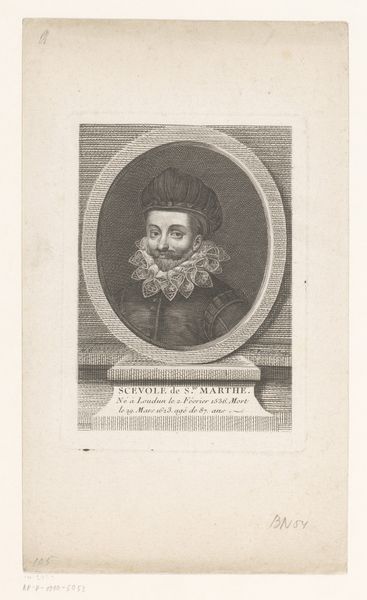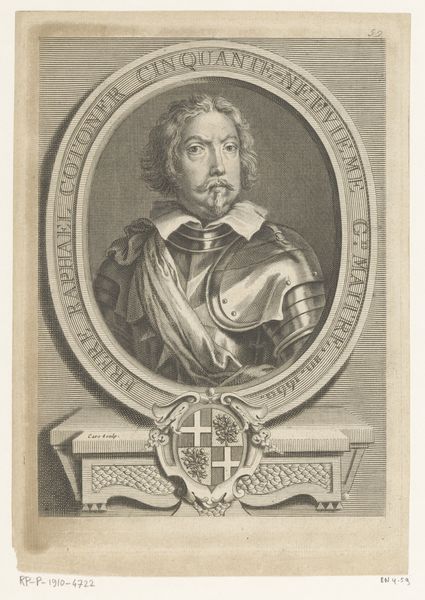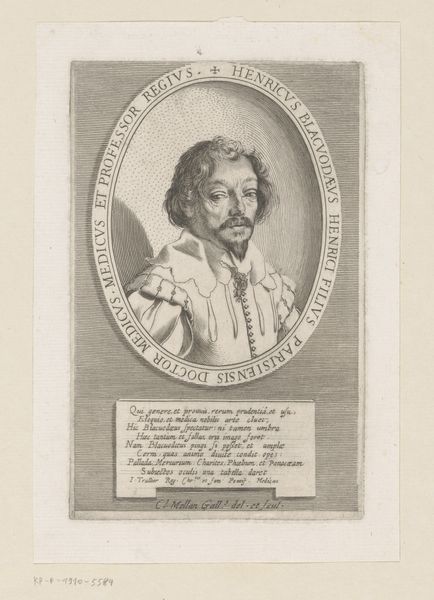
print, etching, engraving
#
portrait
#
medieval
#
baroque
# print
#
etching
#
old engraving style
#
engraving
Dimensions: height 179 mm, width 111 mm
Copyright: Rijks Museum: Open Domain
Editor: This is Pierre Vallet's "Self-Portrait," an etching and engraving from 1608 held at the Rijksmuseum. It’s so intricate, the lines are incredibly fine! What strikes me is how posed and formal it feels, like a statement of self-importance. What can you tell me about it? Curator: Indeed. Think about the print market at the time. This wasn't just about capturing a likeness, but about establishing a public persona. Vallet, as a printmaker, was keenly aware of how these images circulated. What does the inclusion of his name do to signal status? Editor: It personalizes it, gives it authority. Like he's claiming ownership of his image and skill. Curator: Exactly. And consider the context: The rise of printmaking allowed artists to control their own narratives and participate in intellectual and artistic circles. It was a powerful tool for self-promotion and networking. Notice the objects surrounding his portrait—are they included just for decor or for a higher purpose? Editor: I see tools associated with artistry... it gives me the feeling he is signalling the print is of himself, done by himself! So almost like an early advertisement, designed for an audience? Curator: Precisely. These prints often functioned as calling cards and demonstrations of skill. They shaped the way artists presented themselves within a rapidly changing social and economic landscape. Editor: That makes the portrait much more dynamic; it's not just a picture but also a statement about the role of the artist in society! Thank you. Curator: The act of distributing your own portrait creates social power to gain new relationships. A portrait can really create more questions than answers!
Comments
No comments
Be the first to comment and join the conversation on the ultimate creative platform.
